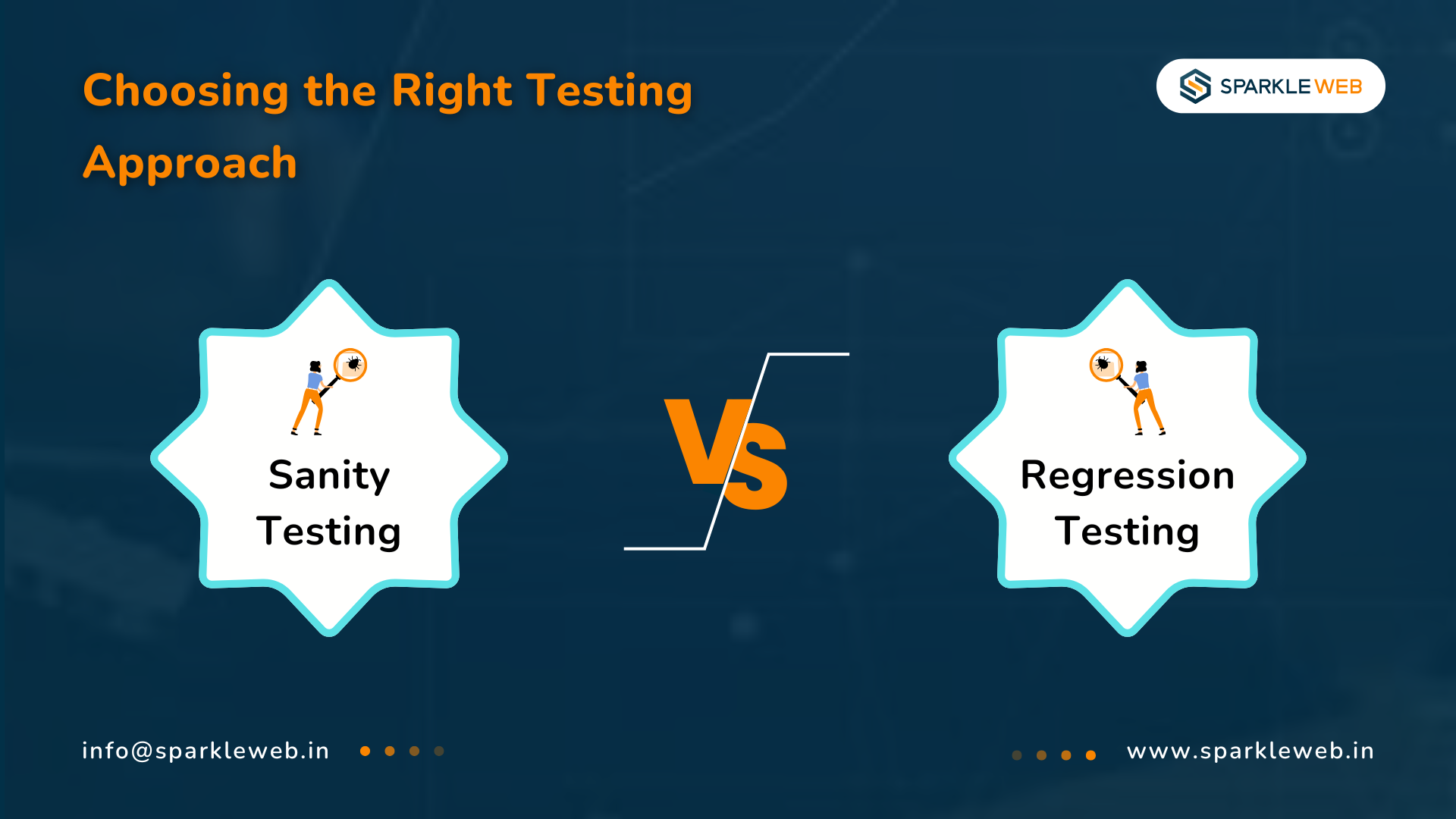-
What they mean
-
Why are they used
- Their scope and timing
- How deep they go
-
How many resources do they need
-
Which one to use in which situation
Sanity Testing vs Regression Testing

What Are the Differences Between Sanity Testing and Regression Testing?
1. Scope
Sanity Testing
-
Sanity testing has a very limited and focused scope.
-
It checks only the part of the application where the change was made.
Regression Testing
-
Regression testing has a very large scope.
-
It tests the whole application to make sure that new updates have not affected any old features.
2. Depth of Testing
Sanity Testing
-
Sanity testing checks only the main and important parts of a specific feature.
-
It does not go very deep.
- It is used to quickly see if something is stable after a change.
Regression Testing
-
Regression testing is very deep and detailed.
-
It tests many use cases, edge cases, workflows, and interactions between features.
3. Purpose
Sanity Testing
-
The main purpose of sanity testing is to verify that a specific change works.
-
It checks if the updated area is stable enough to move ahead with more detailed testing.
Regression Testing
- The purpose of regression testing is to confirm that new changes did not break anything that was working earlier.
4. Execution Timing
Sanity Testing
-
after minor updates
-
after bug fixes
- after receiving a new build
- before running larger test cycles
Regression Testing
-
after major updates
-
after new feature releases
- after big code changes
- during regular testing cycles
5. Frequency
Sanity Testing
Regression Testing
-
feature releases
-
weekly or monthly builds
- automation cycles
6. Resource Requirements
Sanity Testing
-
fewer testers
-
fewer test cases
- less time
Regression Testing
-
more testers
-
more time
- many test cases
- Often automation engineers
7. Automation Capability
Sanity Testing
Regression Testing
-
It repeats often
-
It includes many test cases
- Automation gives faster results
When Should You Use Each Testing Method?
Use Sanity Testing When:
-
A bug has been fixed
-
A small change has been made
- You receive a new build and need quick verification
- You have very little time
-
You want to check only an important module
Use Regression Testing When:
-
A new feature has been added
-
A large code change is made
- You want to confirm complete app stability
- You want to run automated test cycles
-
You want to reduce long-term bugs
Using Both Together
-
Sanity testing acts like a quick filter
-
Regression testing gives full coverage
- Sanity saves time before starting regression
- Regression ensures long-term stability
Conclusion: Why Both Testing Types Are Important Today
-
78% of software failures happen because old features were not retested properly
-
65% of companies now focus heavily on automated regression testing
- Teams that mix sanity + regression testing see
-
- 32% fewer bugs
-
-
28% faster releases
-



Sumit Patil
A highly skilled Quality Analyst Developer. Committed to delivering efficient, high-quality solutions by simplifying complex projects with technical expertise and innovative thinking.
Reply